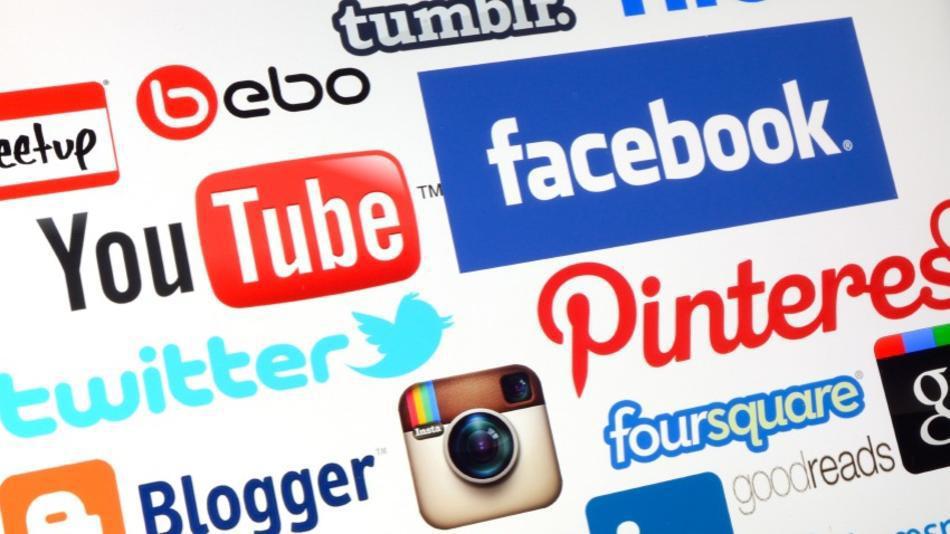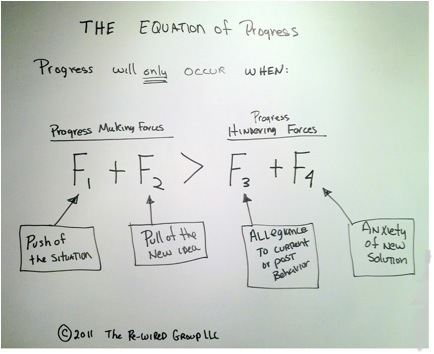How exactly do social media work for us?

My husband started calling me “Mrs. Johnson's birdie” because I love “tweeting” on Twitter. Recently, I started a Google+ account, which means that I have another social platform at my disposal. I definitely like the whole “cocktail party on the computer”, do you think that I show off my life because I am a fan of having fun? If we were acquainted in real life, you would know that this is not at all true, and it is even ridiculous to think about it. So, paraphrasing the innovation demand expert Bob Moesta: what kind of job did I hire social media for?
According to the concept of jobs-to-be-done [JTBD, “work that needs to be done” - when we buy something, be it a product or a service, we do it to work, problem solving or self-help. With a few exceptions, every job that people want to see completed is emotional, social, and functional.
')
Well, let me tell you what kind of work I need social media to do:
1. Help in finding your own style, as well as the ability to publish. In 2006, I started a personal blog, Dare to Dream , and in 2009, I started blogging for the Harvard Business Review, both blogs contributed to my goals - posting posts and finding my own style. Up until 2006, as an analyst on stock status, I could use the Merrill Lynch platform, but then I would not be able to hone my style and express my own point of view.
2. With the help of social media, employers can find me themselves. I use LinkedIn, not even trying to search for job offers on my own, because LinkedIn’s task is to make employers come to me; My network of friends keeps me informed about career opportunities and lets me know about the main competitors in my field. Previously, the process of finding a professional opportunity meant that I would turn to an employment specialist.
3. Social media helps me to stay in touch with people who are dear to me, even if we temporarily do not cross. Facebook in this matter has significantly overtaken other social networks. Since my “staff” now has Facebook, I literally “fired” handwritten notes and paper greeting cards. In addition, Facebook is a platform for expressing the joy of simple pleasures of everyday life, for example, I can say something like “I love to watch the TV series “ Black Mark ” and be heard! This is a functional problem that Facebook solves for me, but probably it’s still more of a social and emotional component.
4. Social media helps expand my own network of contacts. DP Rangaswami (JP Rangaswami), the chief research associate at Salesforce, describes tweets as “pheromones for a knowledge worker,” which means sending signals to search for like-minded people. Thanks to Twitter, I refused to go on different events to search for connections and acquaintances, Twitter is a more efficient and economical method of identifying people who are not part of my network. In addition, Twitter is useful for generating ideas in real time, while it teaches us to think in separate, spectacular remarks (and, frankly, it helps me to grow).
If you “hire” social media, especially to promote your business, you most likely have your own reasons, but first, ask yourself: “what problem do I try to solve?” Most likely, this will help you identify the functional element. To determine the emotional and social components, ask yourself the question: “What progress do I expect?”
Moesta, “an adherent of the theory of milkshake, ” so named after Clayton Christensen, studies motives that encourage people to buy new products and services. After decades of applied research, he came to the conclusion that such work mainly represents a natural "craving" (or need), rather than the traditional "push" of sales and marketing information. The key to understanding the work that purchased products do for you is understanding how you actually behave: not what you say, but what you do. By examining the basic impulse and driving forces in people's lives, he conducts a detailed analysis of the reasons why people “hire” or “not hire” a product, and also tries to understand what prevents and what contributes to their progress. Here’s how it looks visually:

F1 = Situation pressure (frustration). What you are doing at the moment does not work and you are ready to change your actions.
F2 = The driving force of a new decision (a flash of insight when making an innovative solution). This is a desire for change, a magnetic attraction to something new. Without the participation of this driving force - only with the help of a push - no progress will be made.
F3 = Attachment to the past (comfort that you experience from fame and the usual course of action). The opposing force of the tandem "push + thrust" is an attachment to the past, i.e. the difficulty of abandoning the usual course of action.
F4 = Excitement about the new solution. Where there is resistance to progress, there is, as a rule, concern about skills and abilities, as well as costs [which changes will entail].
Then Moesta deduces the basic equation of progress:
When we “hire” a product or service, this is because pressure (F1) + driving force (F2) add up more to total loyalty to the past (F3) + anxiety (F4).

No matter how unhappy we are with the current situation or how attractive the new product is, if the forces of progress do not outweigh the forces hindering development, then we will not even try to correct the situation.
For example, having decided to blog, I had to create a platform, but I had no idea how to do it; Also, I was afraid to express my personal thoughts in him. But the attractiveness of the opportunity to speak publicly overwhelmed the feeling of fear that made me rest. “The new experience of consumption is much more often related to personal improvement than to finding a better solution to the problem,” Moesta notes. As soon as I started using social media, LinkedIn and Facebook quickly became valuable “employees.” Twitter, with its specific format, was harder to “hire”, but my colleague, blogger Matt Langdon (Matt Langdon), liked him, so I started to gain momentum.
So how does the Google+ fit into this company? It is not clear. I'm not sure that this is the problem I want to solve (F1). But if all the cool guys are there, then this is already becoming a serious reason that can attract me (F2). By the way, I am devoted enough to Twitter - I like my tweets and the 140 character limit, which makes you think in clear wording, even with thoughtful conventions. Also, I would need to invest in learning how to use this platform, not to mention the work that needs to be done to move my “online party” from one place to another. And it is only about me alone. If the decision to hire Google+ even gives me one difficulty, then imagine the brunt of the challenge for the corporation.
The concept of “work that needs to be done” is useful in diagnostics, which helps you understand what work you want to see completed (and not what you think you want), and in finding potential resources to do this work. If you still do not have enough fuse to "hire" any social network or other promising candidate, then refer to the Moest progress equation.
You and I can “hire” social media in order to sell products or services, solve a problem that we consider functional. But remember what Moesta says: “There is a deeper emotional message in the work than we suppose.” The real power of social media lies in the social and emotional progress we can make. As technology slows down our progress, makes us addicted to the network, distracting from those we love and helping us to grow instead of fulfilling the intended tasks, as blogger Robin Cangie put it: “the importance of technology work in general, and social media in particular is to facilitate people’s contact, to expand our social circles and strengthen our relationships in real life. ” This is true progress - the work we all want to see completed.
Source: https://habr.com/ru/post/221961/
All Articles